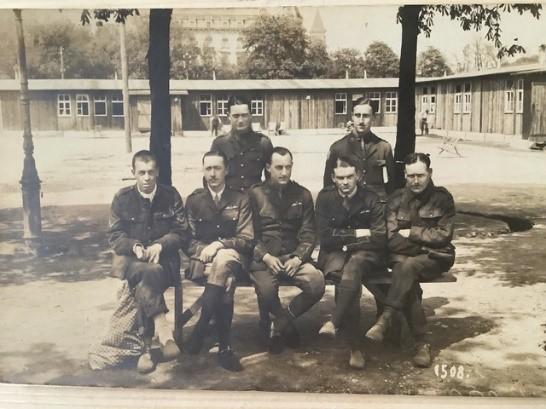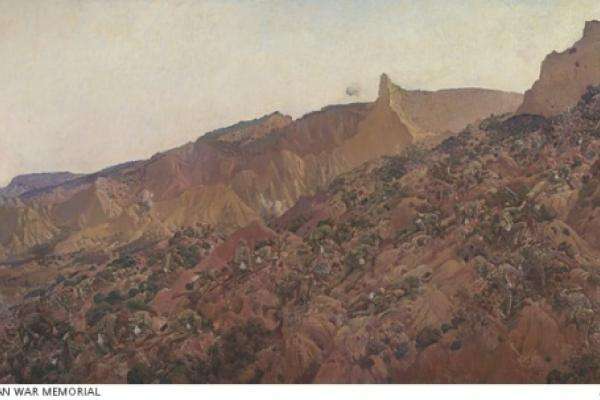The Craig family
Francis Craig and Hannah Elford’s four sons were born in York, Western Australia in the late 19th century. John (known as “Jack”) was the eldest, followed by Frank (known as “Colin”), Gordon and Leslie. When the First World War began, the country boys were all eager to enlist and experience overseas service. Their father needed help to manage the family’s pastoral properties, however, and would only permit two of his sons to leave. To decide who would be allowed to enlist, the brothers held a coin toss. Leslie won a toss, enabling him to leave the family’s southern farms. Despite losing, Colin was determined to serve and snuck away at night, eventually making his way to England, much to the surprise of his brothers.
Leslie was selected as an officer for the 10th Light Horse Regiment and in early 1915 left Australia for service on Gallipoli. Having spent two years in the local Militia before the war, he was a somewhat experienced soldier and horseman. By the time Leslie arrived on the peninsula in May, allied forces had withdrawn to a precarious position, surrounded by Turkish strongpoints on all sides. There was also widespread disease to contend with.
In August the allies sought to break the stalemate by capturing the high ground along the Sari Bair range. As dawn broke on 7 August, they launched an attack on the Nek in an effort to divert attention away from the main offensive. Four successive waves of light horsemen rushed from the trenches hoping to capture this narrow strip of land; each found themselves under heavy fire.
Leslie was in the third wave of the attack. Success appeared unlikely, but the commanding officer in charge of the attack refused to accept defeat. When the whistle blew, Leslie leapt from the trench. As he scrambled past the dead and wounded from previous waves, he was shot.
With his left ankle and right arm badly damaged, Leslie was transferred to a hospital in Egypt. The wound on his ankle became infected and his leg had to be amputated. After further treatment, he was admitted to hospital in England to recover. While learning to use his prosthetic leg Leslie met his future wife, Frances Boyd, a young Irish woman working as a Voluntary Aid Detachment (VAD) nurse at the hospital.
Colin joined the Royal Flying Corps in England, and was commissioned as an officer. During his training, he met Constance “Nancy” Birdwood, a British VAD nurse whose father, General William Birdwood, held commanding positions over Australian forces during the war. Nancy and Colin fell in love, and Colin wrote to General Birdwood for permission to marry Nancy. These letters are now held in the Memorial’s collection. Colin was careful to explain the kind of life Nancy could expect with him after the war. He wanted her to understand the reality of life on a Western Australian sheep station. Before they were able to marry, Colin was posted to France for active service
During a patrol on 22 April 1917, Colin’s squadron encountered enemy aircraft, and his plane was shot down. Colin was reported missing, leading to several anxious weeks for his family and fiancée. General Birdwood made enquiries on behalf of the Craig family, and expressed his sympathy and admiration of Colin in letters to Leslie. Nancy eventually received news that Colin had managed to land his aircraft, despite its rear tail being on fire. He was met on the ground by a German pilot who said, in fluent English, “How do you do, bad luck, can I give you a drink?” The German had lived in England before the war; his American wife wrote to Nancy to assure her that Colin was safe, and that he had become a prisoner of war.
Colin was interned at Freiburg prisoner-of-war camp in Germany. He kept a diary, in which he wrote of an escape attempt in September 1917, during which he and three others managed to evade capture for several days.

Colin Craig (centre), Freiburg prisoner-of-war camp, May 1917, image courtesy Emsley Craig family
Following the armistice in 1918, Colin was repatriated to England and reunited with Nancy. They wed on 3 March 1919, with a guard of honour formed by Australian servicemen. The couple settled in Western Australia, and had three children. General and Lady Birdwood visited Australia several times, their visits covered by newspapers at the time.
Leslie married Frances in her hometown in Donegal, Ireland on 22 September 1917. In October they moved to Western Australia. Leslie and Frances acquired a property near Dardanup, had four children, and went on to hold prominent positions in community organisations in Western Australia



